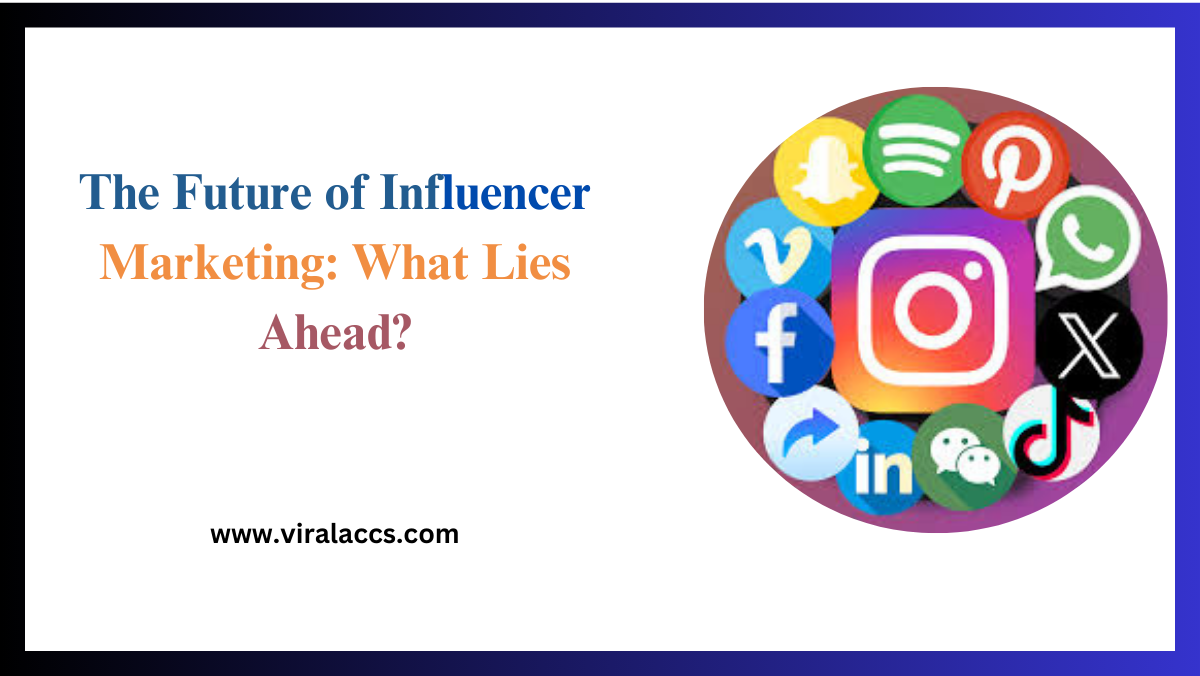The world of influencer marketing is evolving faster than you can say “Instagram story.” What started as a few celebrities promoting products on social media has grown into a multi-billion-dollar industry. But where is it headed next? In this blog post, we’ll explore the current state of influencer marketing, emerging trends, challenges facing influencers, and predictions for the next five years. Whether you’re a brand, an influencer, or simply curious about the future of this dynamic field, read on for valuable insights and strategies.
Current State of Influencer Marketing
Influencer marketing has become a key component of digital marketing strategies. Brands of all sizes are harnessing the power of influencers to reach new audiences and build authentic connections with consumers. Platforms like Instagram, YouTube, and TikTok have become the go-to stages for influencers to showcase products and services.
- The Rise of Micro-Influencers
While mega-influencers with millions of followers still have their place, brands are increasingly turning to micro-influencers. These individuals, who typically have between 1,000 and 100,000 followers, offer higher engagement rates and more niche audiences. Their recommendations are often perceived as more genuine and trustworthy, making them highly effective for targeted marketing campaigns.
- Data-Driven Decisions
Today’s influencer marketing is deeply rooted in data. Brands are using sophisticated analytics tools to measure the ROI of their influencer campaigns. Metrics such as engagement rates, click-through rates, and conversion rates are meticulously analyzed to ensure that marketing dollars are well spent. This shift towards data-driven decision-making is helping brands optimize their strategies and achieve better results.
- Diversification of Platforms
While Instagram remains a dominant platform for influencer marketing, other platforms are gaining traction. TikTok, with its short-form video content, has emerged as a powerful platform for reaching younger audiences. YouTube continues to be a favorite for long-form content, while Twitter is gaining importance for real-time engagement. This diversification allows brands to reach different demographics and experiment with various content formats.

Emerging Trends in Influencer Partnerships
The landscape of influencer marketing is constantly shifting, and new trends are emerging that promise to reshape the industry. Staying ahead of these trends can give brands and influencers a competitive edge.
- Long-Term Collaborations
One-off collaborations are giving way to long-term partnerships. Brands are realizing the value of building ongoing relationships with influencers who align with their values and aesthetics. These long-term collaborations allow for more authentic content, deeper brand loyalty, and sustained consumer engagement.
- Virtual Influencers
The rise of virtual influencers—computer-generated characters with lifelike appearances—is a fascinating trend. These virtual personas can be completely controlled by brands, ensuring consistent messaging and behavior. Virtual influencers like Lil Miquela and Shudu have already amassed significant followings, and their presence is expected to grow in the coming years.
- Shoppable Content
Shoppable content is making it easier for consumers to purchase products directly from influencer posts. Platforms like Instagram and TikTok have integrated shopping features that allow users to buy products without leaving the app. This seamless shopping experience is driving higher conversion rates and making influencer marketing even more effective.
Challenges Facing Influencers
Despite its many opportunities, the influencer marketing industry is not without its challenges. Influencers and brands alike must navigate these issues to maintain credibility and achieve success.
- Authenticity and Trust
With the rise of sponsored content, maintaining authenticity is a significant challenge. Consumers are becoming more discerning and can easily spot insincere endorsements. Influencers must balance sponsored content with genuine, relatable posts to retain their followers’ trust.
- Algorithm Changes
Social media algorithms are constantly evolving, and these changes can impact an influencer’s reach and engagement. For example, Instagram’s shift towards favoring video content has forced many influencers to adapt their strategies. Staying up-to-date with algorithm changes and being flexible in content creation is crucial for continued success.
- Regulatory Scrutiny
Influencer marketing is attracting increased regulatory attention. In many countries, influencers are required to disclose sponsored content to ensure transparency. Non-compliance can lead to fines and damage to an influencer’s reputation. Both influencers and brands must stay informed about the latest regulations and adhere to disclosure guidelines.
Predictions for the Next Five Years
What does the future hold for influencer marketing? While it’s impossible to predict with certainty, several trends and developments are likely to shape the industry in the coming years.
- Integration of AI and Automation
Artificial intelligence (AI) and automation will play a more significant role in influencer marketing. AI-powered tools can help brands identify the most suitable influencers, predict campaign outcomes, and even generate content. Automation can streamline processes such as influencer outreach, contract management, and performance tracking, making influencer marketing more efficient.
- Enhanced Personalization
Personalization will become even more critical in influencer marketing. Brands will leverage data to create highly personalized campaigns that resonate with specific audience segments. This could include tailored content, exclusive offers, and personalized messages. Enhanced personalization will drive deeper connections and higher engagement rates.
- Growth of Niche Communities
Niche communities will gain importance as consumers seek more specialized content. Influencers who cater to niche interests, such as sustainable fashion or plant-based diets, will attract dedicated followings. Brands that align with these niche communities can build loyal customer bases and stand out in a crowded market.
- Ethical and Sustainable Influencing
The demand for ethical and sustainable practices is growing, and this trend will extend to influencer marketing. Consumers are increasingly conscious of the social and environmental impact of their purchases. Influencers who promote ethical brands and sustainable products will gain favor with these conscientious consumers.
Conclusion and Insights
The future of influencer marketing is bright, but it requires continuous adaptation and innovation. Brands and influencers who stay ahead of emerging trends, overcome challenges, and leverage new technologies will thrive in this dynamic field. Remember, authenticity and trust are the cornerstones of successful influencer marketing. By building genuine connections with your audience and staying true to your values, you can achieve remarkable results.
Ready to explore the potential of influencer marketing for your brand? Sign up for our newsletter to stay updated on the latest trends, tips, and strategies. Let’s shape the future of influencer marketing together.








